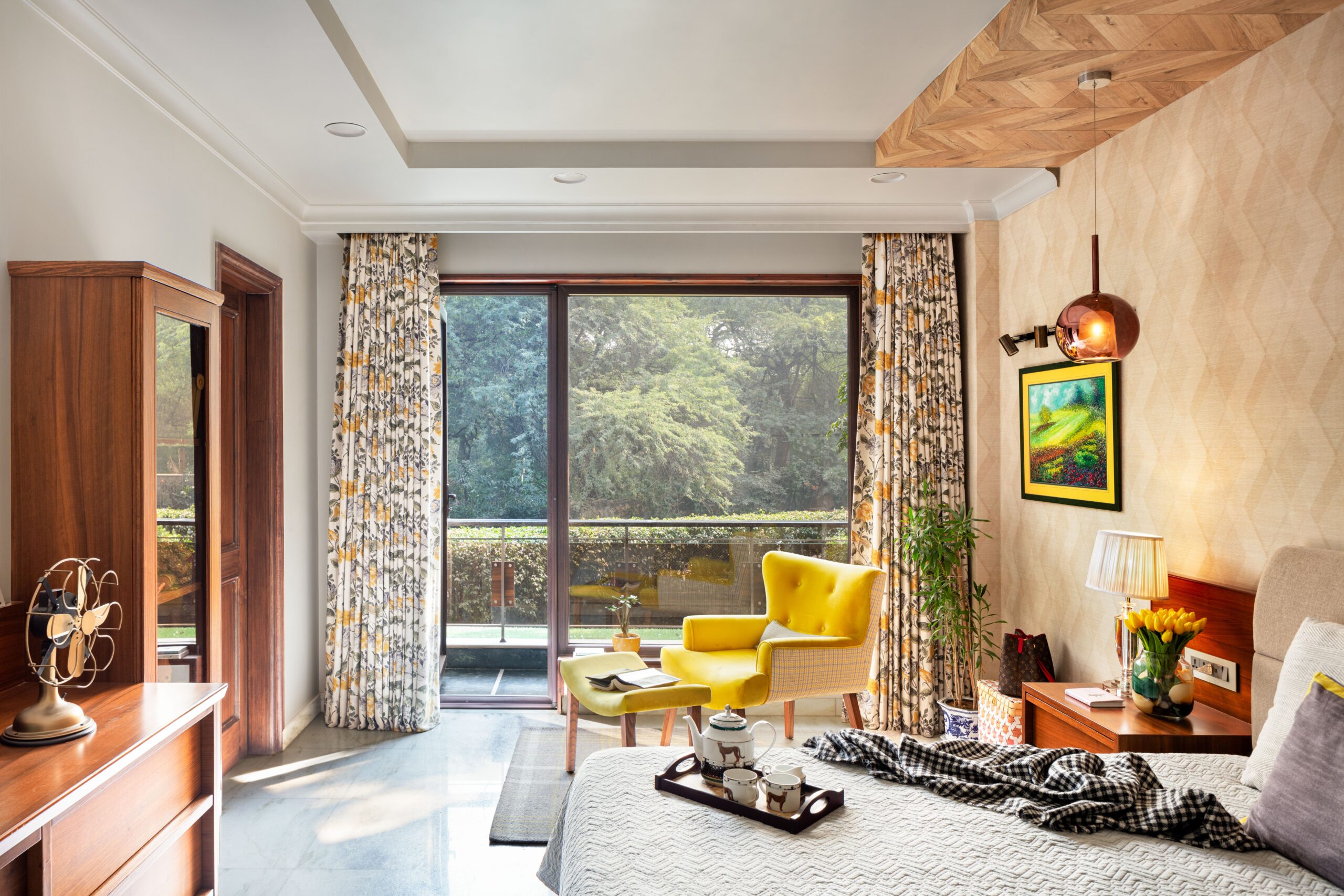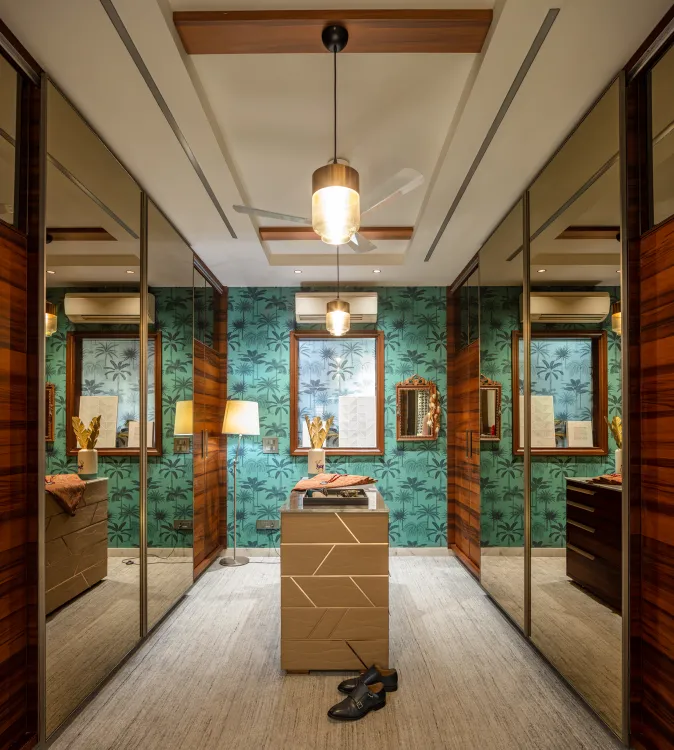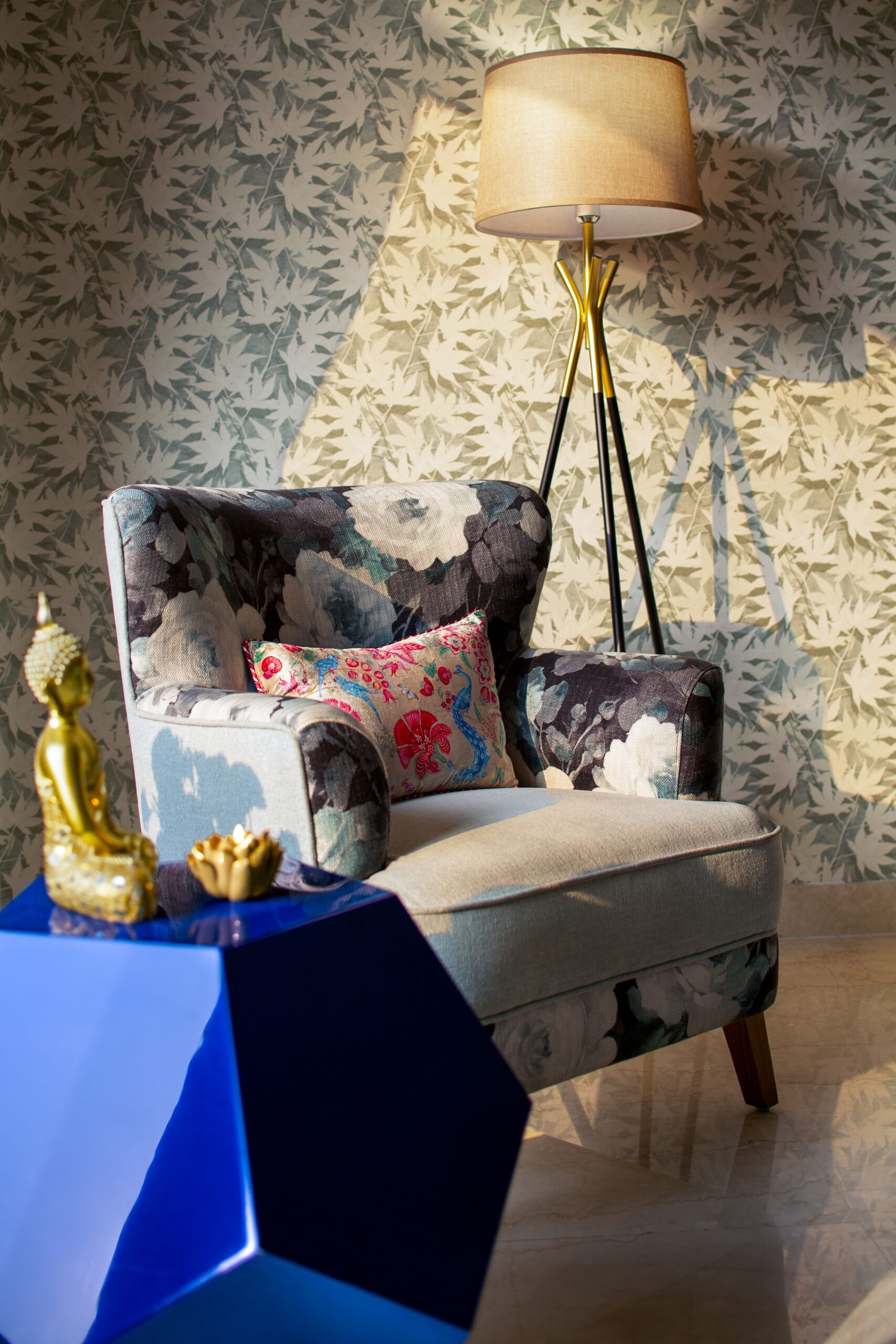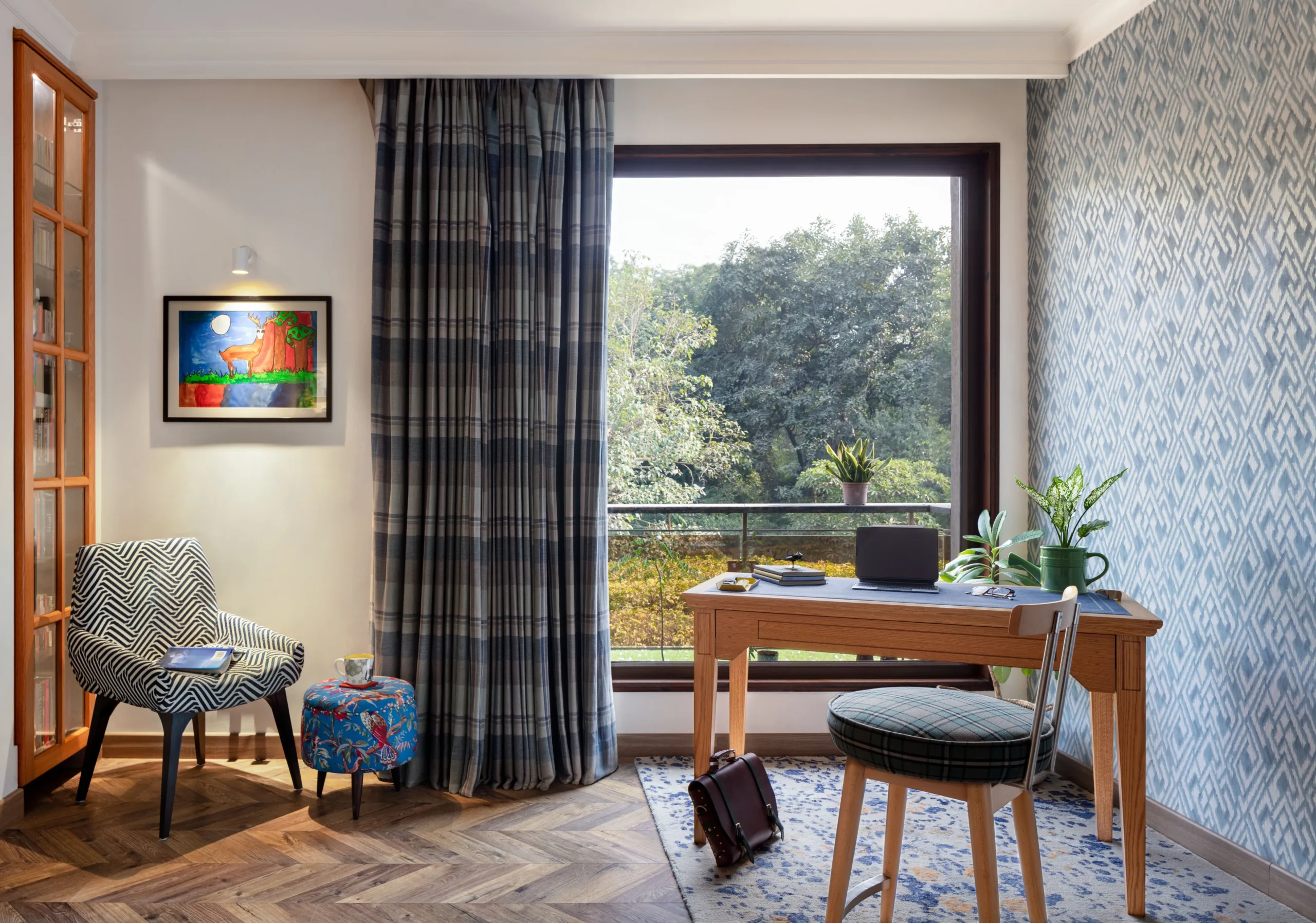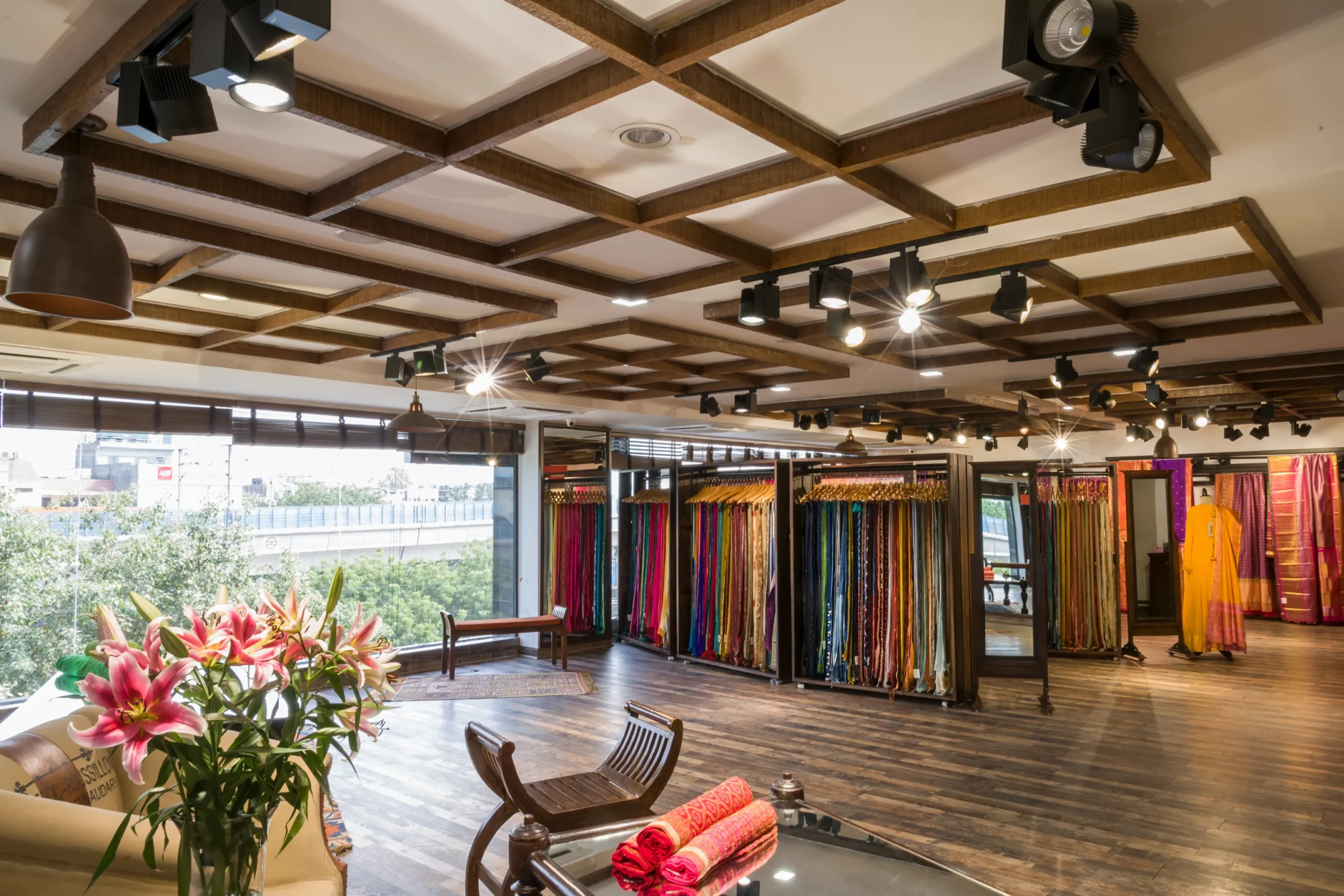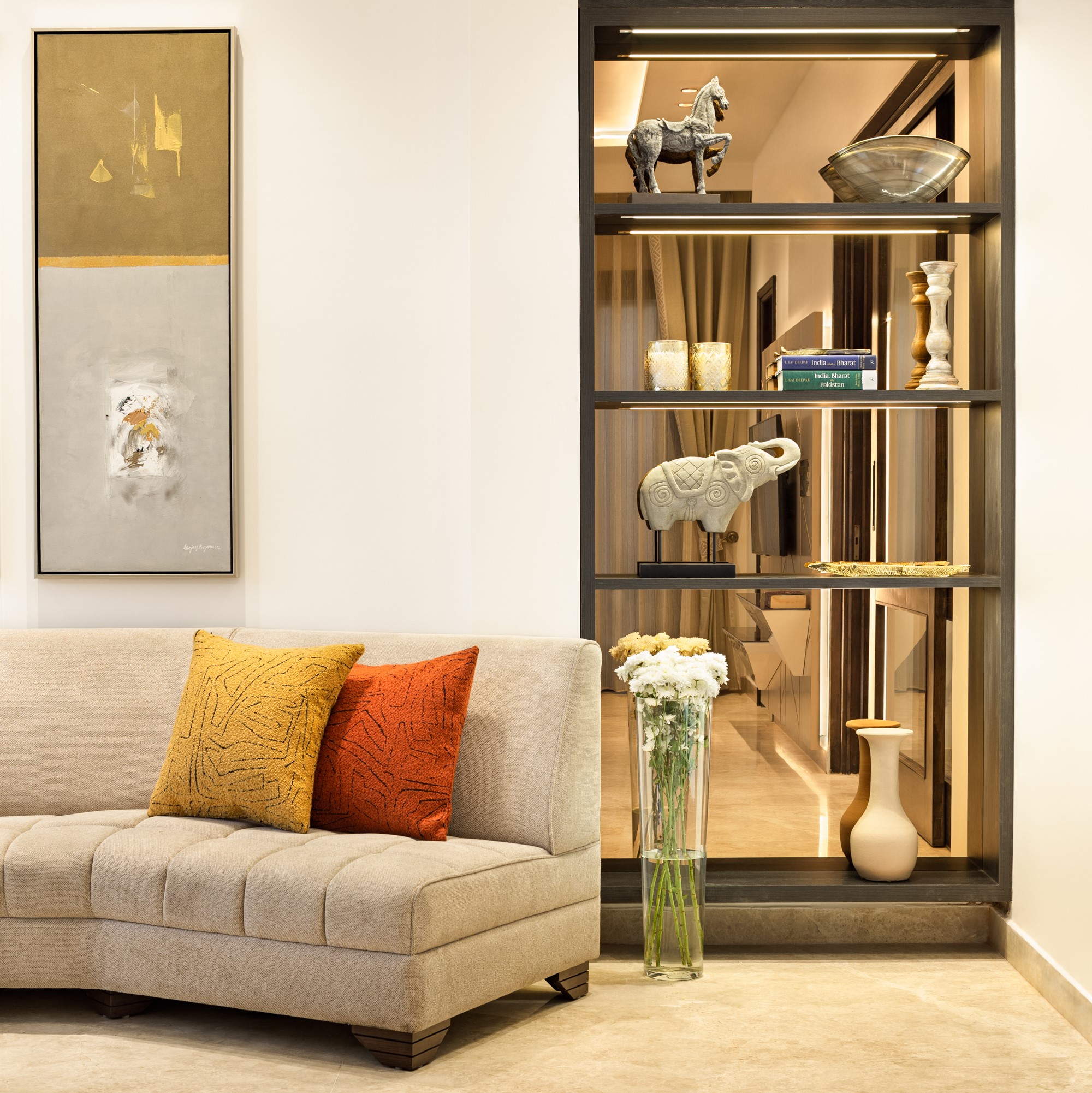Designing with Contrast: How to Mix Wood, Stone, and Light for Visual Balance
Creating a space that feels harmonious yet dynamic is a hallmark of thoughtful interior design. At The Works Interiors, one of the key ways we achieve this is by designing with contrast—blending wood, stone, and light to craft interiors that are visually engaging, functional, and timeless. Whether you are reimagining a bedroom design, planning your home interiors Delhi, or updating your entire house interior design, understanding how to balance natural textures with lighting can transform any space.

The Power of Wood in Interior Styling
Wood is one of the most versatile elements in residential interiors, bringing warmth, texture, and character to a room. From rich oak flooring to teak cabinetry, wood works beautifully to anchor a space and create a sense of familiarity in home interior projects. Pairing different wood tones, or combining wood with stone elements, adds depth and a layered aesthetic that feels intentional rather than cluttered.
For designer homes, wooden features can define zones, highlight furniture pieces, or complement interior styling choices, all while keeping the space cozy and welcoming.
Stone: Strength and Sophistication
Stone, whether in the form of marble countertops, granite walls, or textured tiles, introduces a sense of permanence and elegance to house designers’ projects. Its natural patterns and cool tones contrast beautifully with the warmth of wood, offering a balanced sensory experience.
In home interiors, stone can be used for accent walls, flooring, or even fireplace surrounds. For designers for homes looking to create dramatic yet refined spaces, stone provides a tactile and visual counterpoint that elevates the overall house interior design.
Light: The Invisible Designer
No matter how carefully wood and stone are curated, light is the element that ties everything together. Thoughtful interior styling with natural sunlight or layered artificial lighting ensures that textures are highlighted, contrasts are enhanced, and spaces feel inviting.
From adjustable recessed lighting in a bedroom design to pendant lights that accentuate a stone feature wall, light can dramatically influence perception. For home designers, considering the interplay of light and material is essential to achieve a visually balanced and cohesive interior design for houses.
Bringing It All Together
When designing home interiors Delhi, mixing wood, stone, and light is about balance. Too much of one element can overwhelm the senses, while too little can feel flat. The best designers in India carefully layer textures, colors, and lighting to craft spaces that are both functional and beautiful.
Whether you’re consulting house designers for a full renovation or working with interior designer Delhi specialists for a small update, embracing contrast allows your home interior to feel curated, intentional, and full of personality.
For anyone searching for the best interior designers in India or exploring designs for houses that combine elegance with comfort, understanding the interplay of wood, stone, and light is a timeless principle that transforms any home interiors project.
By thoughtfully combining wood, stone, and light, even the simplest house interior design can feel layered, dynamic, and inviting. From bedroom design to entire residential interiors, contrast is a tool that enables home styling that is both functional and beautiful—creating spaces that truly feel like home.
